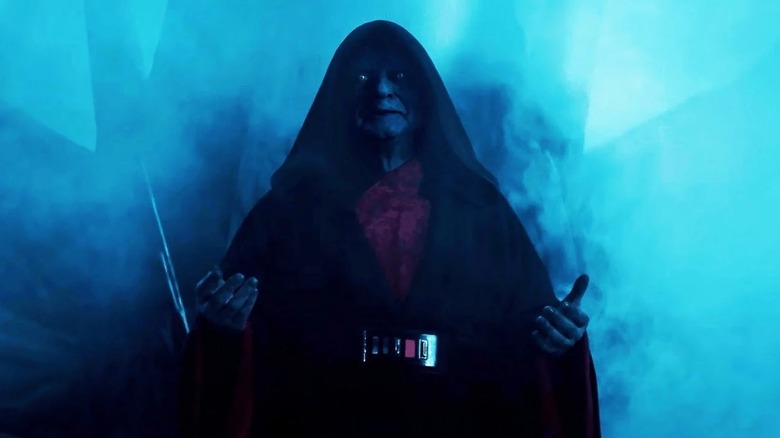Star Wars: What Is The Code Of The Sith & What Does It Really Mean?
There is no bigger threat to the "Star Wars" galaxy than the Sith. These dark side-users seek nothing but control, even if it comes at the subjugation of others and widespread death. They're cold, calculating, and one step ahead of their enemies more often than not, making them difficult for Jedi of any rank to stop. While they may seem to be more driven by the political power that can come from their dangerous powers, much like their light side enemies, even the most powerful Sith in the "Star Wars" universe adhere to a doctrine that dates back to the earliest days of the faction.
Qotsisajak, or the Code of the Sith, is a doctrine by which Sith conduct their lives and schemes. It says, "Peace is a lie, there is only passion. Through passion, I gain strength. Through strength, I gain power. Through power, I gain victory. Through victory, my chains are broken. The Force shall free me." The meaning behind it is that those who are strong and embrace the Force will gain power and glory over those who've failed to do so. It promotes the idea that the Sith are above all others thanks to their ambition, strength, and connection to the dark side, and that they must destroy the weak to remain as such.
The Code of the Sith finds its origin in the non-canon "Star Wars" Legends continuity, and is partially inspired by an infamous real-world literary work.
The Sith Code partially stems from a dark real-life literary work
There are a lot of dumb things in the old "Star Wars" Expanded Universe, but the Sith Code isn't one of them. It adds a sense of realism to the dark side practice, giving it a more malicious and cult-like feel than it had previously. In "Star Wars" Legends, the doctrine is attributed to Sorzus Syn, but in the real world, it was written by David Gaider. He put it together for the 2003 video game "Star Wars: Knights of the Old Republic" with permission from Lucasfilm. He looked to two sources of inspiration to create it, the Jedi Code and another, much darker document.
"That's where the Code of the Sith came from (reverse the Jedi Code— done!)," Gaider wrote on his Tumblr page roughly a decade after the game released. He went on to explain that the overall Sith philosophy behind the Code that's explored somewhat in "Knights of the Old Republic" stems from "Mein Kampf": the 1925 manifesto and autobiography written by Adolf Hitler. "The Sith philosophy (at least what I wrote of it for Korriban) was inspired by 'Mein Kampf' at least in parts (which made the forumites who talked about how awesome it was, and how it made sense, one part hilarious and one part frightening)," Gaider added.
Though the Sith are fictitious and many find their aesthetics cool, in truth, there's some real darkness behind the them, their code, and their overall philosophy. Their villainy has its roots far closer than a galaxy far, far away after all.

